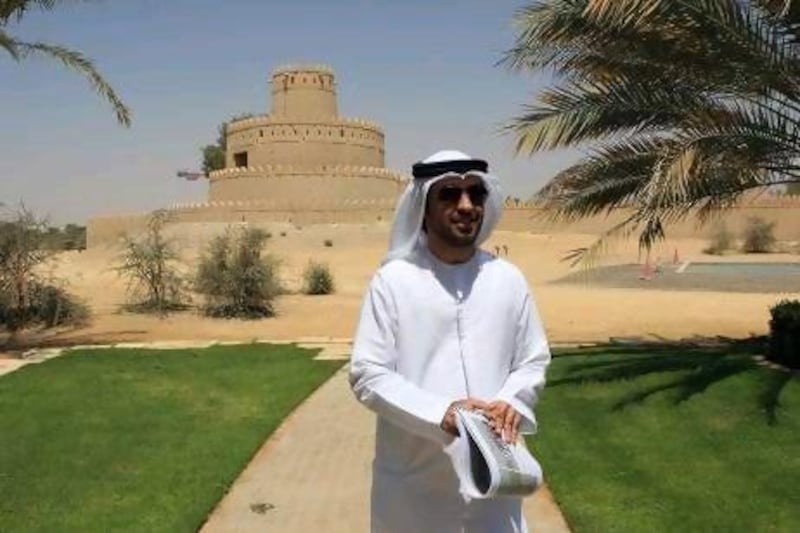AL AIN // Mohammed Al Hammadi and Eric Wilson have walked the trail for the first time, past Al Jahili Fort, down sandy alleyways and through a car park that smelled of roasting meat.
By the time they had finished their walk, Mr Wilson's face was pink from the sun and dust coated his shoes.
But if the urban planners' idea catches on, the trudge could become a stroll - a paved and shaded heritage trail guiding pedestrians to four historic sites.
"The idea is so people can get a good cross-section of what Al Ain is like, off the main streets and into the neighbourhoods," said Mr Wilson, a manager at the Abu Dhabi Urban Planning Council.
The heritage trail is one of several ideas the government planners have developed in a month-long assessment of Al Jahili district.
They plan to eventually evaluate every district in the city to see whether they have enough community facilities, and proposing ideas to enhance city life.
Al Jahili is their first project. The district has about 9,000 residents, about 1,000 of them Emirati.
The planners want to find better ways to use the spaces between lots and the utility corridors, sandy areas where cables and pipes are buried.
They have suggested sprucing up a string of eateries into a "restaurant row", and found several vacant areas that could become neighbourhood parks. They will present their recommendations to leadership for review.
But their star idea is the trail connecting Al Mutaredh Oasis, Al Jahili Fort, the Sheikh Zayed Palace Museum and Al Ain Oasis. It would also pass the strip of restaurants.
"The tourists' path through this area would be quite interesting," said Leo Aranquiz from the Philippines, a psychiatric nurse who has lived in Al Ain for five years.
The trail would encourage tourists and residents to leave their cars and walk, Mr Wilson said.
"If we're successful in gaining interagency consensus behind this idea, we work with our different agencies to bring this to fruition," he said.
On Wednesday, the planners traced part of the trail for the first time, starting by Al Jahili Fort.
"We haven't walked this yet, so we're going to see how it goes," Mr Wilson said.
Mr Al Hammadi consulted his map, walking through sand and rocks beside the fort.
They reached a paved path, then sand again, with residential compounds on one side and an old cemetery on the other.
"This is in between different plots," Mr Wilson said. They emerged from the alley into a dirt car park with restaurants on either side.
"Some of these restaurants are the favourites of locals," Mr Wilson said. "They're where people come all the time."
As the sun beat down, Mr Al Hammadi added: "We need to design it to be shaded. There will be seating."
Finally, they turned left on to a well-paved road. The Sheikh Zayed Palace Museum appeared at the end of the street, with the greenery of Al Ain Oasis in the background.
"So there you go," Mr Wilson said. "We went from one heritage site to another heritage site, all using just local neighbourhoods."
The planners plan to eventually seek public comment.
"From a planning perspective, it's good to talk to them - to know their ideas," Mr Al Hammadi said.






